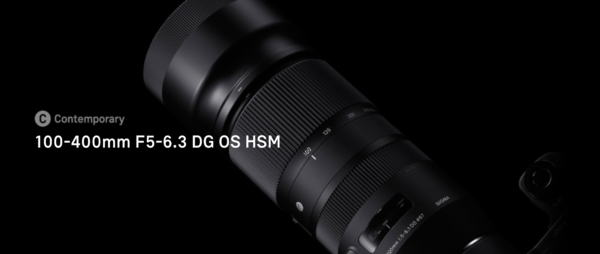One of the great things about living in Colorado is that I am surrounded by the stunning rocky mountain ecosystem. There is easy access to the airy reaches of the alpine tundra and the subalpine with its rolling evergreen forests and jeweled lakes. Within these zones are a myriad of wildlife and great opportunities to photograph them in their native habitat. Two of my favorite animals to photograph here are the mountain goat and the moose.
After numerous days inside editing photos, writing, emailing, and creating presentations I had had enough. It was time to get outside and make some photos. Fall has fallen and winter has yet to arrive and this is a great time to photograph our local population of mountain goats. I only had one afternoon to find and photograph them so I wanted to travel light and fast. My go to lens for situations like this is the Sigma 100-400 C lens. This light sharp lens has really found its way into my pack and my heart recently.
For this adventure, I would start by scouring the southern flanks of 14,265′ Quandary Peak for signs of mountain goats. The portable and packable 100-400 C lens was the only lens I brought with me so I could get around the steep mountainside more easily. In November, the coats of the mountain goats are usually thick and full in preparation for winter. They are also typically bunched up in groups for the rut. But this day was different. I hiked all over—but found just a solo billy. He was up high and in a spot with a beautiful background. The zoom range of the 100-400 is incredibly useful as I could shoot at 100 for a shot of the goat in his environs and then zoom to 400 for a tighter portrait.

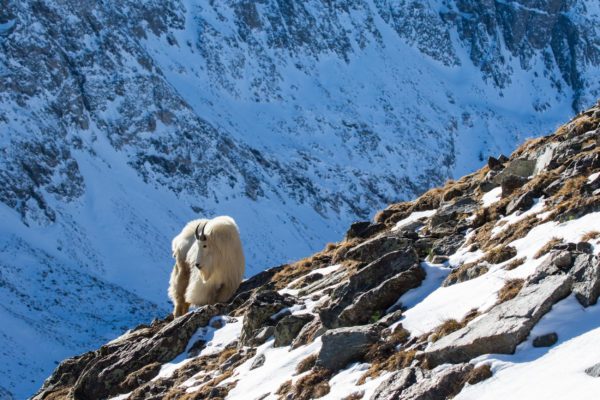
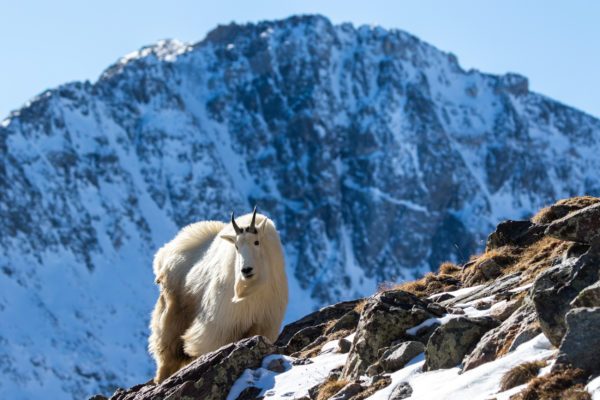
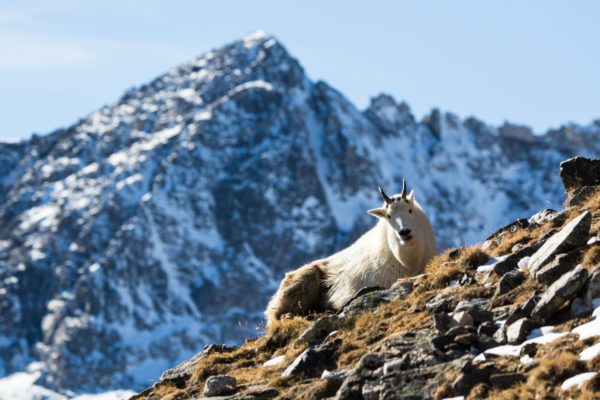
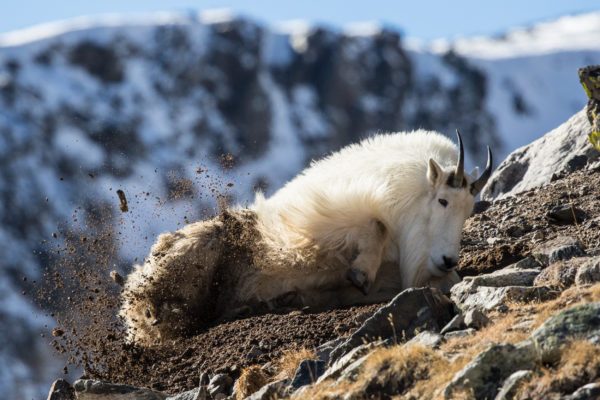
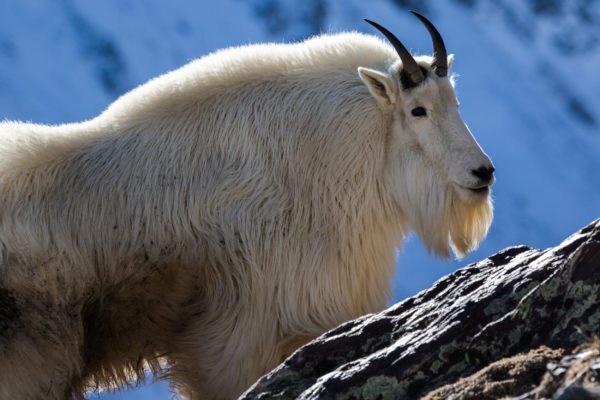
For photographers interested in making wildlife images I would highly suggest learning as much as you can about the animals you wish to photograph. Not that you need to be a wildlife biologist, but the basics about when and where to find animals is incredibly important. For example, if you head the National Elk Refuge outside of Jackson WY in June, guess what:you won’t find. Elk! That time of year they will be widely dispersed and headed up into the high country. Also, learn what habitats they are most likely to be encountered in. In Colorado moose love willow choked wetlands so that is always where I start. Also, get to know your scat and track identification because, short of a sighting, that will be how you know they are in the area. Park Rangers, online nature photography groups, and even the locals at the coffee shop are great resources to learn what animals are in the area at a given season.
After my time with the mountain goat I hiked the 2000 or so vertical feet back to my truck. There was still light left in the day so I decided to continue my wildlife photo hunt. Right across the street from Quandary but lower on the pass in the subalpine zone is an area that I know holds moose. Again, I just had the 100-400 in my pack so I could hike fast in the waning light. When it rains it pours and as luck would have it I came across a large bull almost immediately. I saw his fresh tracks in the shallow snow and flanked him a bit knowing that he would come into an open area. He emerged from the woods right where I thought he would. He was backlit and beautiful with his breath ignited by the low-angle sun. Moose are aggressive and huge, weighing in at over 1000 pounds. Having the zoom capabilities of the 100-400 C was critical as I wanted to keep a safe space between us.

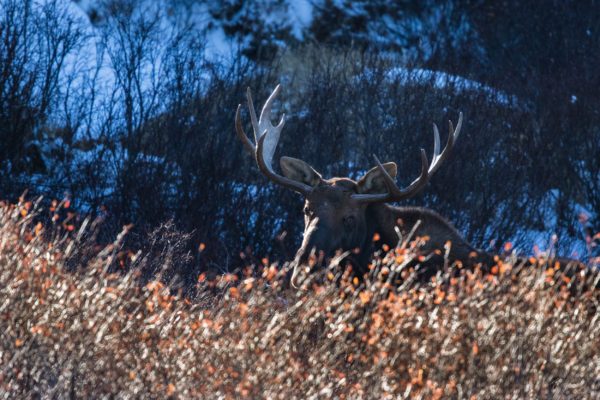
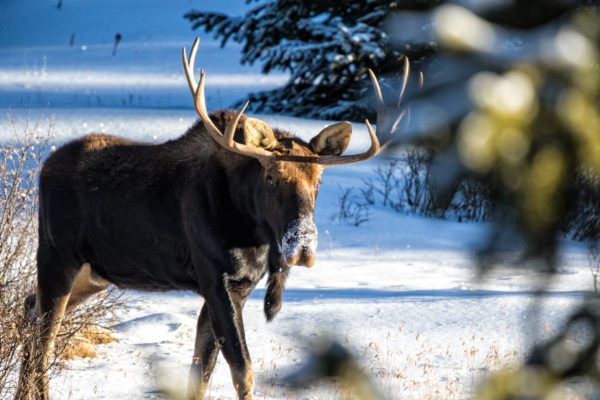
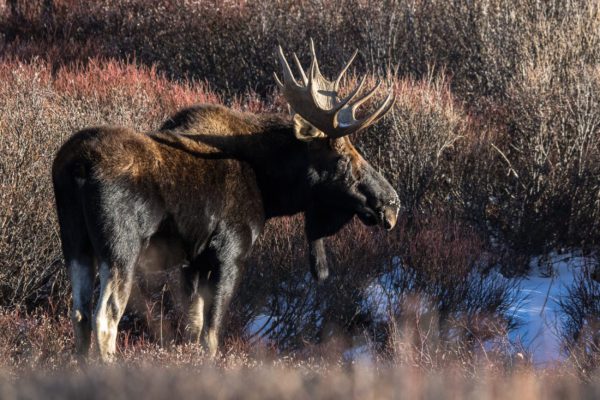
The Sigma 100-400 lens produced some great images this day. It was very light in my pack and that kept me moving fast through rugged terrain. It is super sharp with great detail coming though in both the mountain goat and moose images. I have printed shots of both at 17X22 and they look amazing. I love the flexibility of the zoom range and the ability to shoot handheld using the Optical Stabilizer. The Sigma 100-400 continues to impress me and is sure to be in my pack for many adventures to come.
Now through December 31st, 2017, The Sigma 100-400mm F5-6.3 DG OS HSM | C is offered with $100 Instant Savings!


